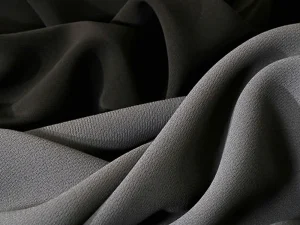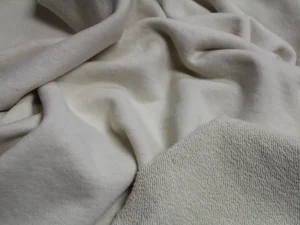Sweatshirt is a popular piece of clothing everyone likes in the chilly winters. They feel warm and cozy, whether you wear them in the gym, in support, or casually. But have you ever wondered: what are sweatshirts made of, and what makes them so soft? Actually, the secret lies in the variety of materials used.
Sweatshirts come in various materials, each with unique comfort and features. Some fabrics are breathable and stretchy, while some are thicker and specific for warmth. So, choosing the right material among those can be confusing yet crucial. Right? But you need not worry! In this article, I will explore some common sweatshirt materials. So, let’s get started!
Why Material Matters For Sweatshirts?

As I said above, choosing the right material for a sweatshirt is essential. The fabric affects sweatshirts’ performance in different environments and even their lifespan. So, before we dive into the significant section, let’s explore why material matters.
- Comfort and Feel: Comfort is a significant concern when buying a sweatshirt. The nature of the material decides how it feels to your skin. For example, some fabrics offer extra warmth, and others are designed to be breathable.
- Flexibility and Stretch: Many people like stretchy shirts that move with their bodies. They feel more comfortable and at ease when sitting and walking. So, the flexibility of sweatshirts highly depends on the material.
- Durability Over Time: Durability is a primary concern when spending money on sweatshirts. Not all materials can handle washing and wearing in the same way. The fabric you choose highly affects the lifespan of sweatshirts.
- Ease of Maintenance: Nobody wants high-maintenance sweatshirts. Some fabrics require extra care while washing and drying. However, choosing easy-to-maintain material saves time and money.
- Style and Appearance: The material of sweatshirts also affects the overall look. For example, some fabrics look fresh and sleek, while others may offer a casual vibe. Considering the material can help you choose your perfect fit for good looks.
What Are Sweatshirts Made Of?: Common Materials
Behind every stylish sweatshirt is a fabric that makes it so. However, each material differs in several aspects, such as comfort level and looks. So, before you grab your next sweatshirt, let’s explore some common materials and their specifications.
1- Polyester

Polyester is one of the most common materials used for men’s shirts, including sweatshirts. Polyester is a synthetic fabric, an artificial fiber made from chemicals. So, what makes it suitable for sweatshirts? First, it is highly durable, which means it does not get damaged, stays in the same condition, and lasts longer. Moreover, along with durability, it is also lightweight.
Polyester sweatshirts do not feel heavy, and you can wear them all day. Another advantage of this material is that it dries quickly and does not hold onto moisture. For example, during exercise or workouts, it pulls the sweat away from your skin and dries fast. However, remember that polyester is not very breathable; it is made specifically for warmth.
2- Fleece
Fleece is a synthetic material, especially polyester. It is commonly used in making men’s jackets and sweatshirts. Fleece has become a favorite among manufacturers due to its ability to trap warmth. This means it can keep your body warm for a long time. Moreover, it is brushed during manufacturing to create tiny fibers on the surface.
These fibers feel fluffy like clouds and provide extra comfort in winter. However, unlike polyester, fleece is a breathable material. It allows air to circulate and prevents overheating or suffocation. Besides, it does not demand high maintenance, such as too much ironing. This is a big plus when you are in a hurry and don’t have time.
3- French Terry

French Terry is a type of cotton fabric with a unique texture. How? This material has small loops on the inner side, while the outer side is flat and smooth. The inner towel-like texture increases comfort and feels softer and cozier. So, you can wear French Terry sweatshirts all day. Along with comfort, they are also breathable.
This means they allow proper air circulation and avoid overheating and sweating. This material is primarily suitable for moderate temperatures. Moreover, it has moisture-wicking properties, effectively absorbing moisture and keeping your body dry. You can also wear these sweatshirts for outdoor activities such as support and workouts.
4- Spandex
Spandex, also known as Elastane or Lycra, is highly stretchable. Its primary use is in making support shirts, sweatshirts, and men’s sweaters. This material is known for its stretchability, even though it can be stretched to five times its original size. This makes it perfect for activities that require movement and stretching.
Besides its high stretchability, spandex does not lose its shape. After stretching, it returns to its original shape, stays fit, and does not sag over time. Moreover, spandex sweatshirts are lightweight and absorb moisture. This makes them ideal for moderate to high-temperature environments. However, due to their elasticity, they may not offer that high breathability.
5- Blended Fabrics
Blended fabric is a mixture of two or more materials. It is specially designed to combine the qualities of two materials in one fabric. When these fabrics are used in sweatshirts, they offer versatility in style and performance. For example, cotton is a durable material, and polyester is moisture-wicking. So, their blend proves highly durable and comfortable.
A combination of spandex and polyester provides stretchiness and comfort. It gives sweatshirts flexibility, prevents them from sagging, and adds comfort and style. Moreover, some materials are less likely to wrinkle. When they are blended with materials such as cotton, they provide durability and low maintenance. In this way, manufacturers use different blends to ensure different qualities in one shirt.
6- Organic Cotton
It is a type of cotton grown without pesticides and fertilizers. Manufacturers prefer it for sweatshirts due to its environmental sustainability. After use, it does not harm our earth or other living organisms. Moreover, it is also lightweight and breathable. So, its shirts stand out in comfort and soft touch.
One of the biggest advantages of this material is that it is hypoallergenic. This means it does not cause skin irritation or allergic reactions. As I said above, it is grown naturally and includes no chemicals. Thus, it becomes more suitable for people with sensitive skin. Moreover, cotton lasts several years due to its strong fibers and remains shiny after regular use.
7- Wool
Wool is another natural material made from animal hair. It has been used for centuries to make men’s coats, sweatshirts, and jackets. Wool offers several advantages, including its ability to regulate body temperature. How? Basically, it has natural crimps or waves that create a barrier between your skin and the outside environment.
Wool keeps you warm even in the coldest weather. Moreover, due to its antimicrobial properties, it is an odour-resistant material. This means it does not grow bacteria that cause bad smells; you can use it for a long time. Lastly, wool is biodegradable, which means it breaks down naturally in the environment. This reduces pollution and keeps the environment sustainable.
How to Choose the Right Sweatshirt Material?
You have seen in the above section that sweatshirts come in various materials. However, not all those materials offer the same qualities. Hence, choosing the right one among those is key to ultimate comfort. So, how would you decide which suits you better? Confused? Worry not! Here are some factors that will help you choose the right sweatshirt material.
- First, consider the weather and temperature. Some materials offer more air circulation and are best for moderate to high-temperature weather. However, if you want a sweatshirt for a colder climate, go for wool and a thicker blend.
- Comfort is a huge factor when choosing a sweatshirt. If you prefer a soft touch, go for fleece and cotton. However, use polyester and organic cotton if breathability is your primary concern.
- Think about durability before buying a sweatshirt. For example, cotton and polyester are more durable and do not lose their charm even after regular use. However, you should prefer fleece and French Terry for frequent use and a soft touch.
- Other factors you must consider are maintenance and care. Each type of material requires different maintenance, and you should choose according to your needs. For instance, use polyester and blended fabric if you want an easy-to-clean material. However, wood and organic cotton require high maintenance, such as gentle washing.
- Lastly, keep your budget in mind, as each material has a different price. If you have a tight budget, choose fleece, spandex, or blended fabric. However, in the premium option, you can choose organic cotton, wool, or French Terry.
Frequently Asked Questions
Are all sweatshirts made with the same thickness of fabric?
No, not all sweatshirts are made with the same thickness of fabric. They come in different thicknesses depending on the requirements and materials. For example, sweatshirts made with lightweight fabric are thinner than those made with heavy materials.
What kind of sweatshirt fabric is the easiest to maintain?
Polyester sweatshirts are easiest to maintain because they do not shrink or stretch. They also resist fading, so you can wash them in machines. Lastly, polyester sweatshirts dry quickly and do not require ironing.
What material is best for athletic sweatshirts?
The blend of spandex and polyester is best for athletic sweatshirts. Polyester is known for moisture-wicking, which keeps your body dry. However, spandex is a highly stretchable material that allows easy movement for support.
Conclusion
Sweatshirts are one of the most trendy and common outfits. They come in a range of materials that vary in quality and features. In this article, I have discussed some common materials used to make sweatshirts. Among them, one standard material is polyester. It is an affordable option and provides easy maintenance.
French Terry is another material known for its flexibility. It is commonly used in support shirts and pants. However, manufacturers also blend some materials to combine different features. The blend provides versatility and enhances performance. Other options include cotton, wool, and spandex. Consider their distinct features and choose the one that suits you better.
